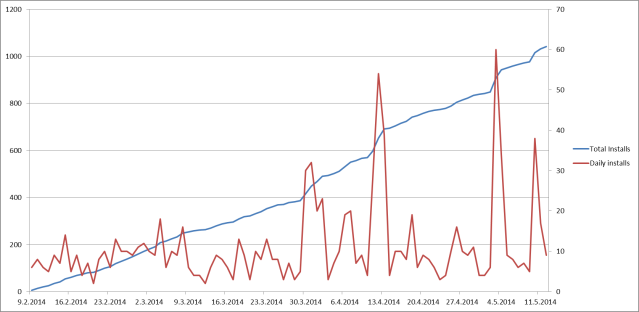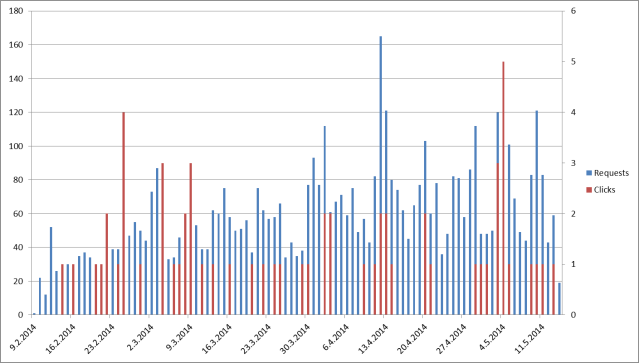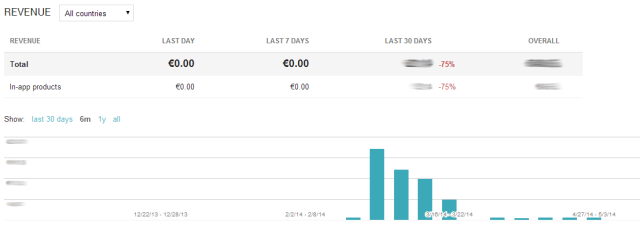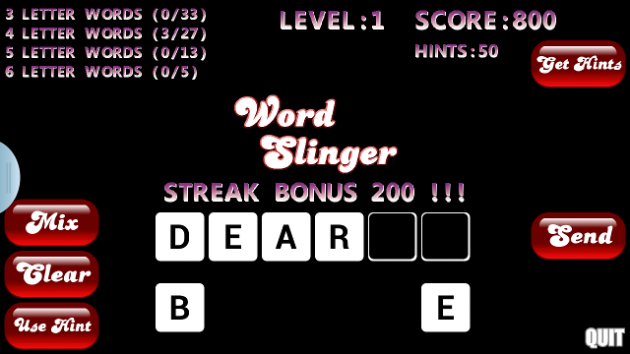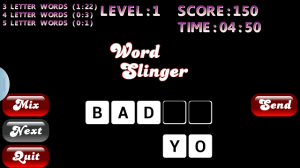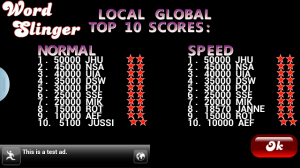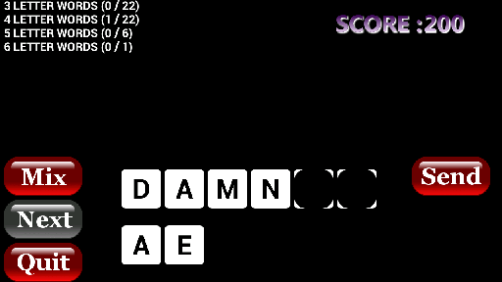My game (Word Slinger) has been now for a little over three months in the Play store. It has now reached over 1000 (yes, you read correctly!) downloads. I think it’s pretty remarkable in the context what I had originally expected and hoped for.
My original goal was to learn to create an Android Game and upload it to Play store to have it available for anyone who would find it entertaining and interesting.
When I was creating the game I decided to push the goal a little bit further. I added some features like high scores, ads and eventually in app purchases. The idea was not to make money with it rather learn how to do it and _maybe_ cover some of the development expenses.
I am gonna analyze how it has succeeded so far. Here are some graphs about the progress.
Progress of downloads:
There’s nothing remarkable here really. The spikes in daily installs are due to the marketing campaigns I have run on FB.
Admob requests / clicks:
This chart boils down into few things. Clicks are very few, 62 total so far. Yes, people probably doesn’t like ads and are not clicking unless something very interesting comes up. I hope irritation (or should I say attitude?) doesn’t prevent from clicking something interesting. One thing that is not showing here is that almost all clicks are from the USA, almost 95%. Maybe the ads culture is developed further there than in EU?
It’s interesting how little revenue this creates. My game should have 1000 times more active users and if the clicks (and revenue) scale linearly then this could cover some of the costs, now it really doesn’t.
Income from the in app purchases:
I have smudged the actual amounts but make no mistake about it, the total revenue is very very low. I barely got to the target of getting purchases so I could buy myself a cold beer. This is the scale of things 🙂 Nevertheless, at the start there was some action in IAP side but lately it’s next to none, like you can see it’s gone down by 75%.
This is the statistics (or some of it) for the first quarter for my game. One of the blog visitors said wisely that do games for fun, not for money. It has certain wisdom in it. Of course, by looking the numbers provided doesn’t proof anything else but having the money factor in place it causes more anxiety and maybe empty hopes.
Unfortunately I haven’t got any feedback how people like my game (or if they don’t). No feature requests or not even a single bug report. Maybe 1000 is a little too few to get to there? Anyways, inspired by the statistics I am planning to update the game and hopefully this yields more downloads and happy gamers.
